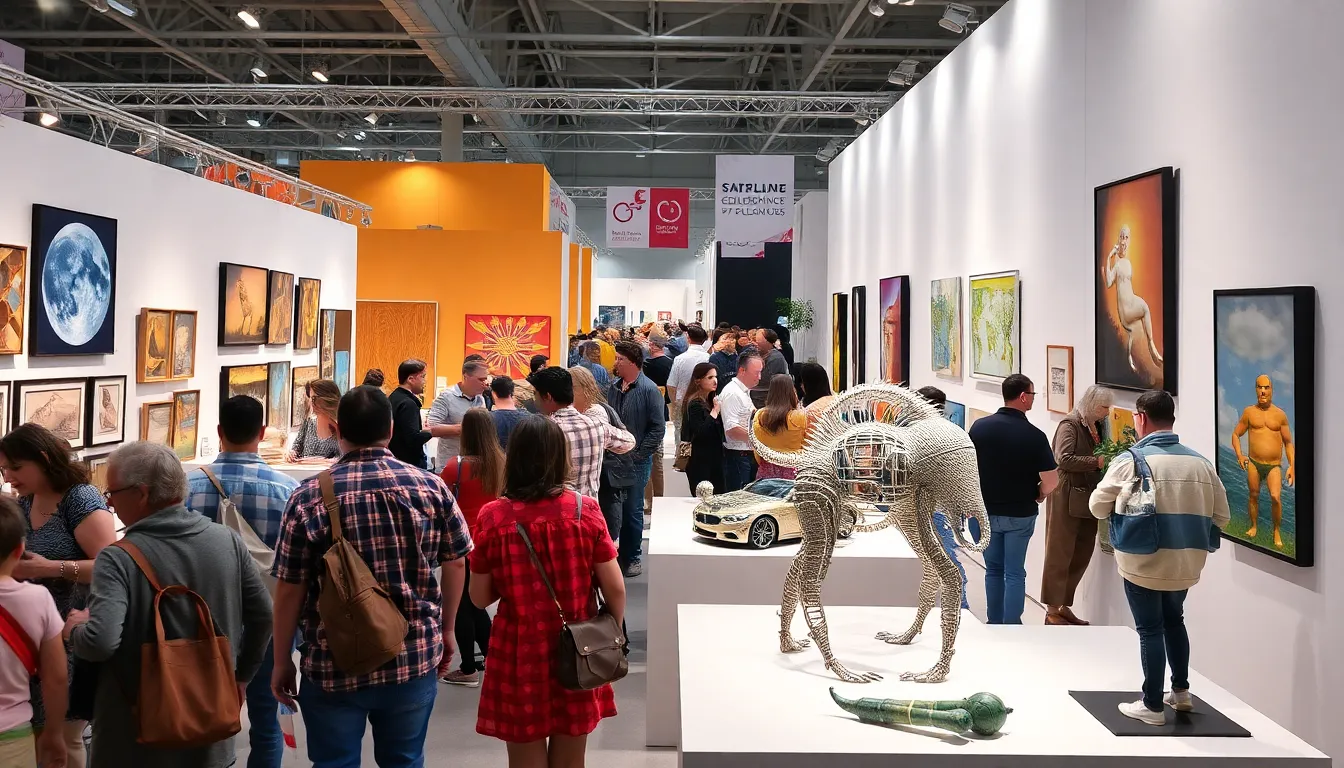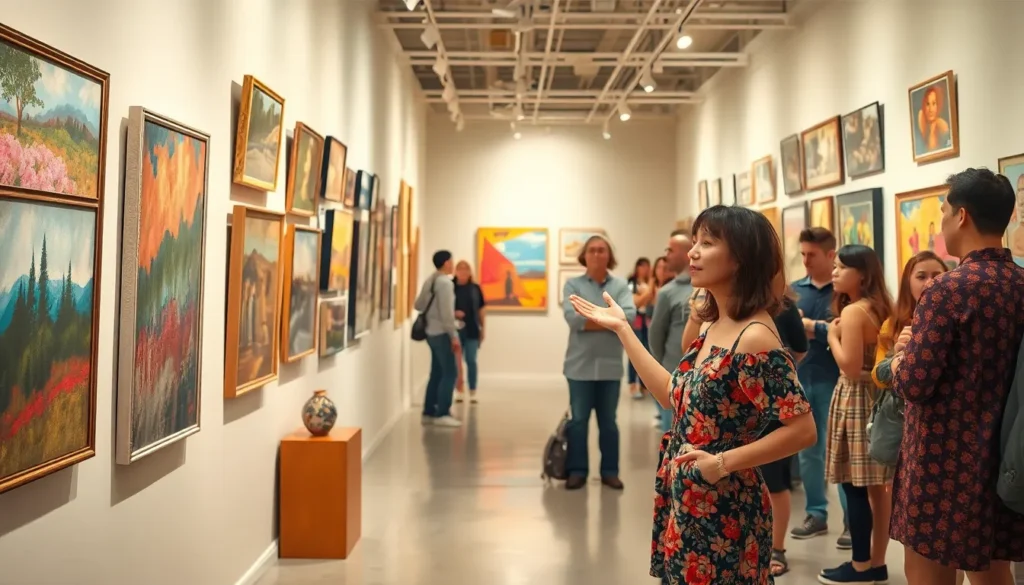Table of Contents
ToggleIn a world where creativity knows no bounds, the visual arts scene is buzzing with excitement. From stunning gallery exhibitions to groundbreaking digital installations, there’s never been a better time to dive into the colorful chaos of artistic expression. Whether you’re an art aficionado or just someone who appreciates a good paint splatter, the latest updates promise to tickle your imagination and maybe even your funny bone.
Latest Trends in Visual Arts Updates
Current updates in the visual arts scene reveal exciting trends that inspire creativity. Noteworthy developments include a focus on emerging talent and the adoption of innovative techniques.
Emerging Artists to Watch
Several emerging artists redefine artistic landscapes with their unique visions. For instance, Maeve O’Brien captivates viewers through immersive installations that challenge perceptions. Likewise, Daniel Lee explores technology as a medium, integrating augmented reality into his work. Additionally, Fatima Duran combines traditional methods with modern themes, creating compelling narratives in her paintings. Each artist’s contribution enriches the visual arts community, offering fresh perspectives that are worth following.
Innovative Techniques and Styles
Innovative techniques shape the current visual arts environment, pushing boundaries beyond traditional forms. Artists utilize 3D printing to create intricate sculptures that blur the line between art and technology. Similarly, digital painting allows creators to experiment with vibrant colors and styles, resulting in stunning visuals. Furthermore, mixed media approaches combine photography and painting, enhancing storytelling elements in artworks. Many visual artists also employ sustainable practices, using eco-friendly materials to echo environmental concerns. These trends illustrate the evolving nature of visual arts, driving engagement and exploration.
Significant Exhibitions and Events

This section delves into the notable exhibits and events shaping the current visual arts landscape. A variety of major art fairs and gallery openings are making waves, highlighting fresh talent and innovative expressions.
Major Art Fairs
Art fairs play a crucial role in promoting contemporary art. This year’s Art Basel featured over 250 galleries showcasing a diverse array of works. Exhibitions included pieces from well-known artists alongside emerging visionaries. The Frieze Art Fair in New York spotlighted up-and-coming creators like Maeve O’Brien and Daniel Lee, drawing large crowds eager to engage with new trends. Auction highlights demonstrated collectors’ increasing interest in digital art, reflecting this medium’s growing significance.
Notable Gallery Openings
Recent gallery openings mark exciting additions to the visual arts domain. The Contemporary Arts Museum Houston launched a new exhibition space dedicated to mixed media works. This opening spotlighted innovative approaches, including 3D-printed sculptures that captivate viewers. Meanwhile, the Morgan Art Gallery unveiled a collection devoted to sustainable art practices, showcasing works that emphasize environmental concerns. Enthusiasts visiting these galleries will discover various artistic techniques and themes that resonate deeply within the community.
Impact of Technology on Visual Arts
Technology significantly influences the visual arts landscape. Artists leverage digital tools and innovative techniques to enhance their creative processes and engage broader audiences.
Digital Art and AI Integration
Digital art continues to reshape artistic expression. Many artists use software like Adobe Creative Suite and Procreate to create stunning visuals. Integration of artificial intelligence introduces new possibilities. Programs such as DALL-E and DeepArt allow creators to generate artwork based on simple prompts. This technological advancement challenges traditional definitions of authorship and originality. Emerging platforms encourage collaboration between artists and AI, fostering unique creative partnerships that redefine visual narratives.
Virtual Reality Experiences
Virtual reality (VR) creates immersive environments that transform viewer experiences. Artists develop VR installations that allow individuals to step inside their creations. This technology enhances storytelling, enabling participants to interact with art in groundbreaking ways. Galleries increasingly incorporate VR to elevate exhibitions and engage audiences more deeply. Experiences like “The Night Café” and “Rainforest” transport viewers into dynamic, interactive worlds, blending art and technology. Such innovations not only attract new visitors but also inspire artists to push the boundaries of their work.
Cultural Shifts in the Art Community
Recent trends in the art community highlight a shift toward greater inclusivity and environmental awareness. These cultural changes reflect broader societal movements while influencing artistic expression.
Focus on Diversity and Inclusion
Artists increasingly prioritize diverse perspectives. Many galleries showcase works by underrepresented communities, enriching the art dialogue. Noteworthy initiatives include mentorship programs aimed at emerging artists from various backgrounds, fostering a more inclusive environment. The National Museum of African American History and Culture recently launched an exhibition focusing on the contributions of Black artists. Such efforts empower marginalized voices, allowing them to share unique narratives. Additionally, collaboration between artists and organizations highlights different artistic practices, enhancing community engagement. Various art fairs, such as the Armory Show, significantly reflect this growing emphasis on diversity.
Environmental Consciousness in Art
Artists actively embrace sustainability in their work. Various contemporary practices incorporate recycled materials, showcasing innovative reuse methods. Notable works using eco-friendly materials appear in exhibitions worldwide. Artists, like Olafur Eliasson, create immersive installations that raise awareness about climate change. The rising prevalence of sustainable art practices aligns with environmental movements, urging communities to reflect on their impact. Many art institutions now prioritize green initiatives, including energy-efficient gallery designs and waste reduction strategies. Events such as the Green Art Fair highlight these environmental concerns while inspiring artists to think critically about their materials and messages.
The visual arts landscape is thriving with innovation and creativity. Emerging artists are capturing attention with fresh perspectives while technology reshapes how art is created and experienced. The commitment to inclusivity and sustainability is also paving the way for a more diverse and environmentally conscious art community.
As galleries and exhibitions continue to evolve, they offer unique opportunities for engagement and exploration. This dynamic environment invites everyone to appreciate the rich tapestry of artistic expression that defines today’s visual arts scene. The future holds endless possibilities for both artists and audiences alike.



